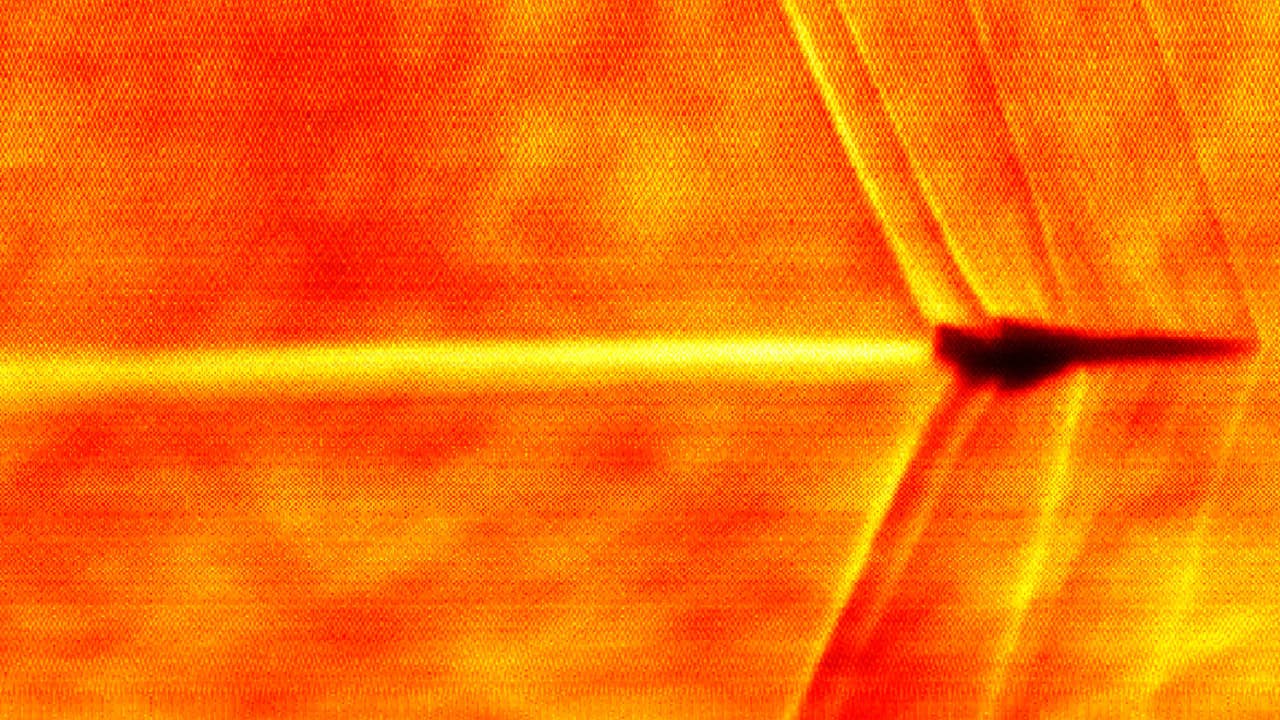
We’ll start to miss this sort of thing soon. NASA partnered with Boom Supersonic to capture the invisible; the supersonic shockwave of Boom’s XB-1 aircraft breaking the sound barrier.
"This image makes the invisible visible — the first American made civil supersonic jet breaking the sound barrier," Blake Scholl, Boom Supersonic founder and CEO, said in a statement.
It's an arresting image and required some precise coordination and exact piloting to pull it off. Boom Chief Test Pilot Tristan “Geppetto” Brandenburg positioned the XB-1 at an exact time and speed in a precise location over the Mojave Desert to enable NASA to photograph XB-1 flying in front of the sun, documenting the changing air density around the aircraft at speeds exceeding Mach 1.
To capture the imagery, NASA used ground telescopes with special filters that detect air distortions, such as shock waves, around the supersonic aircraft.
The XB-1's maiden supersonic test flight in January
As space.com details, the photo is a Schlieren image. Developed as far back as 1864 by German physicist August Toepler to study supersonic motion, Schlieren photography is still used in today's aeronautical engineering to reveal how light bends around differences in air pressure during supersonic flight.
Why are they doing all this? A) because they can, and B) because they’re researching how the sonic boom propagates. As anyone who lived on the Atlantic coasts of England and Ireland when Concorde was regularly flying to New York can attest, when it broke the sound barrier over the Atlantic that sound traveled a long way and was extremely loud. Windows were broken, cats surprised, teas spilled, and other disasters. Supersonic flights that make sonic booms over populated areas in the US are prohibited, but the ability to make those flights would dramatically cut coast-to-coast flight times.

Pic: Pennsylvania State University Acoustical Model of Mach cutoff, Flight
Hence the ironically named Boom Supersonic. The Overture aircraft it’s building and that the XB-1 is a step towards can fly at speeds up to Mach 1.3 without producing an audible boom that reaches the sound. It achieves this by analysing atmospheric conditions to break the sound barrier at a precise height and delta to ensure that the sonic boom refracts in the atmosphere and never reaches the ground.
The result will be 90 minutes shaved off the coast-to coast time, which is pretty decent, though you’d imagine the 65-80 passengers travelling on it will have to pay handsomely for the privilege.
Here's a vid that spans the decades and shows Mike Bannister, former Chief Concorde Pilot for British Airways, flying the Overture simulator rig.
tl;dr
- NASA collaborated with Boom Supersonic to photograph the shockwave of the XB-1 aircraft breaking the sound barrier, marking a significant moment in civil aviation history.
- Precise coordination was required for the XB-1's test flight, with the pilot guided to specific waypoints to capture the aircraft eclipsing the sun using ground telescopes.
- The captured imagery utilizes Schlieren photography, a technique that reveals light distortion caused by changes in air pressure, initially developed in the 19th century.
- Boom Supersonic aims to develop the Overture aircraft, which could travel at Mach 1.3 without producing audible sonic booms over populated areas, significantly reducing coast-to-coast flight times in the US.
Tags: Technology


Comments